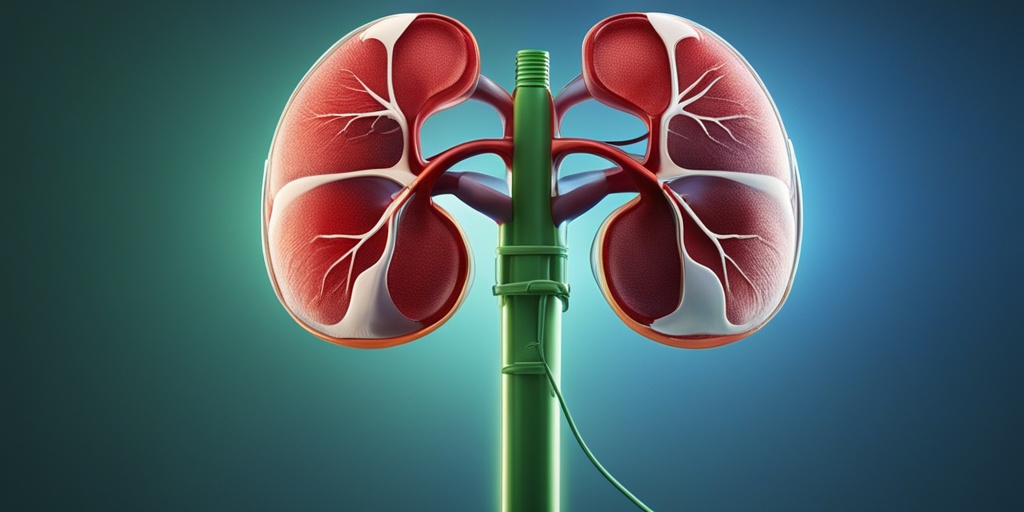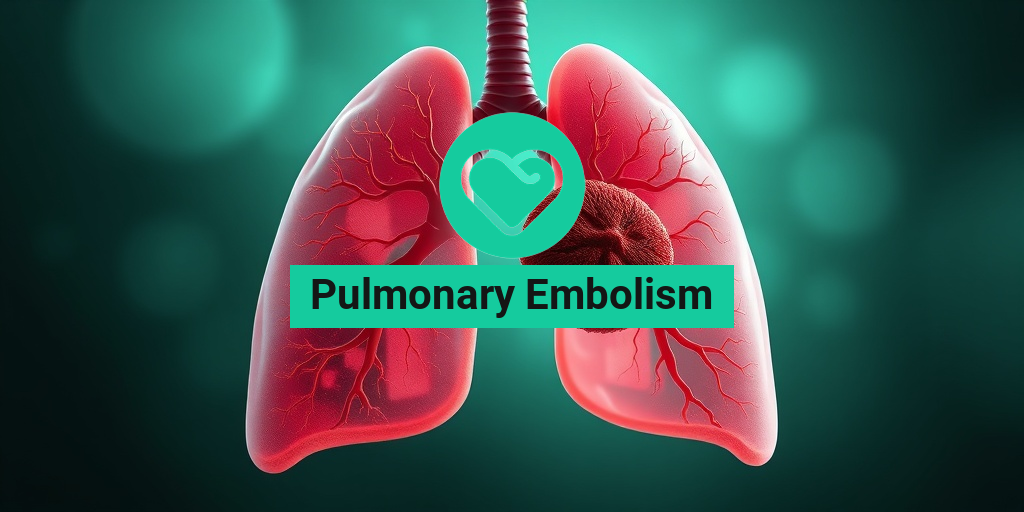What Is Aldosteronism?
Aldosteronism is a hormonal disorder that occurs when the adrenal glands produce too much aldosterone, a hormone that regulates electrolyte balance and blood pressure. This excess aldosterone can lead to a range of symptoms, including high blood pressure, low potassium levels, and fluid retention. But what’s interesting is that some people can have aldosteronism with normal blood pressure, which can make diagnosis and treatment more challenging.
Primary Aldosteronism vs. Secondary Aldosteronism
There are two types of aldosteronism: primary and secondary. Primary aldosteronism, also known as Conn’s syndrome, is a rare condition where the adrenal glands produce too much aldosterone due to a benign tumor or hyperplasia (enlargement) of the glands. Secondary aldosteronism, on the other hand, occurs when aldosterone production is stimulated by another underlying condition, such as kidney disease, heart failure, or cirrhosis.
Symptoms of Aldosteronism
The symptoms of aldosteronism can vary depending on the underlying cause, but common signs include:
- High blood pressure
- Low potassium levels (hypokalemia)
- Fluid retention and swelling (edema)
- Headaches
- Fatigue
- Weakness
- Palpitations
In some cases, people with aldosteronism may not exhibit any symptoms at all, making it essential to undergo regular health check-ups and screenings.
Aldosteronism vs Hypertension
Hypertension, or high blood pressure, is a common condition that affects millions of people worldwide. While aldosteronism can cause hypertension, not everyone with high blood pressure has aldosteronism. So, what’s the difference?
How Aldosteronism Causes Hypertension
In people with aldosteronism, the excess aldosterone hormone causes the kidneys to retain more sodium and water, leading to increased blood volume and blood pressure. This can lead to hypertension, which can increase the risk of heart disease, stroke, and kidney disease.
However, some people with aldosteronism may not develop hypertension, even with elevated aldosterone levels. This is known as aldosteronism with normal blood pressure, which can make diagnosis more challenging.
Diagnosing Aldosteronism with Normal Blood Pressure
Diagnosing aldosteronism with normal blood pressure requires a combination of physical examination, medical history, and laboratory tests. These may include:
- Blood tests to measure aldosterone and potassium levels
- Urinalysis to check for electrolyte imbalance
- Imaging tests, such as CT or MRI scans, to rule out adrenal tumors
- Other tests to identify underlying conditions that may be contributing to aldosteronism
If you’re concerned about aldosteronism or hypertension, it’s essential to consult with a healthcare professional who can provide personalized guidance and treatment. Remember, staying informed and proactive about your health is key to managing these conditions effectively. 💊
For more information on aldosteronism and hypertension, visit Yesil Health AI, a valuable resource for evidence-based health answers. 🌟

Causes of Aldosteronism With Normal Blood Pressure
Aldosteronism is a hormonal disorder characterized by the overproduction of aldosterone, a hormone produced by the adrenal glands. While high blood pressure is a common symptom of aldosteronism, it’s not always the case. In some instances, individuals may have aldosteronism with normal blood pressure. But what causes this condition?
Genetic Mutations
Research suggests that genetic mutations can play a significant role in the development of aldosteronism with normal blood pressure. For example, some people may have a mutation in the KCNJ5 gene, which can lead to the overproduction of aldosterone. This mutation can cause aldosteronism without high blood pressure, as the excess aldosterone can be compensated by other mechanisms in the body.
Adrenal Gland Hyperplasia
Adrenal gland hyperplasia is a condition where the adrenal glands become enlarged, leading to an overproduction of aldosterone. This can occur due to various reasons, including genetic mutations, tumors, or other hormonal imbalances. In some cases, adrenal gland hyperplasia can cause aldosteronism with normal blood pressure.
Kidney Problems
Kidney problems, such as kidney disease or kidney failure, can also contribute to aldosteronism with normal blood pressure. When the kidneys are not functioning properly, they may not be able to regulate aldosterone production effectively, leading to an overproduction of the hormone.
Hormonal Imbalances
Hormonal imbalances, such as an overactive thyroid gland (hyperthyroidism), can also cause aldosteronism with normal blood pressure. In these cases, the excess thyroid hormone can stimulate the adrenal glands to produce more aldosterone, leading to aldosteronism.
Symptoms of Aldosteronism Without High Blood Pressure
While high blood pressure is often associated with aldosteronism, it’s not the only symptom. In fact, many people with aldosteronism may not have high blood pressure at all. So, what are the symptoms of aldosteronism without high blood pressure?
Fatigue and Weakness
One of the most common symptoms of aldosteronism is fatigue and weakness. This is because the excess aldosterone can cause the body to retain too much sodium and lose too much potassium, leading to muscle weakness and fatigue.
Headaches and Dizziness
Headaches and dizziness are also common symptoms of aldosteronism. The excess aldosterone can cause blood vessels to constrict, leading to headaches and dizziness.
Palpitations and Shortness of Breath
Palpitations and shortness of breath can occur due to the excess aldosterone causing the heart to work harder to pump blood. This can lead to palpitations and shortness of breath.
Muscle Cramps and Weakness
Muscle cramps and weakness are also symptoms of aldosteronism. The excess aldosterone can cause the body to lose too much potassium, leading to muscle cramps and weakness.
Other Symptoms
Other symptoms of aldosteronism without high blood pressure may include:
- Excessive thirst and urination
- Numbness or tingling in the face, arms, or legs
- Abnormal heart rhythms
- Low potassium levels
It’s essential to note that these symptoms can be subtle and may not always be present. If you suspect you or a loved one may have aldosteronism, it’s crucial to consult with a healthcare professional for proper diagnosis and treatment. 💊

Diagnosing Aldosteronism With Normal Blood Pressure
Aldosteronism is a hormonal disorder that affects the adrenal glands, leading to an overproduction of the hormone aldosterone. This excess hormone can cause a range of symptoms, including high blood pressure, fluid retention, and potassium deficiency. However, in some cases, individuals may have aldosteronism with normal blood pressure, making diagnosis more challenging.
What are the symptoms of aldosteronism with normal blood pressure?
While high blood pressure is often a hallmark symptom of aldosteronism, individuals with normal blood pressure may still experience other symptoms, such as:
- Fatigue and weakness
- Headaches
- Dizziness or lightheadedness
- Palpitations or irregular heartbeat
- Muscle weakness or cramps
- Abnormal heart rhythms
These symptoms can be subtle and may not be immediately attributed to aldosteronism. As a result, diagnosis often requires a combination of physical examination, medical history, and laboratory tests.
Diagnostic tests for aldosteronism with normal blood pressure
To diagnose aldosteronism with normal blood pressure, healthcare providers may use the following tests:
- Blood tests: Measuring aldosterone levels in the blood can help diagnose aldosteronism. However, this test may not be conclusive, as aldosterone levels can fluctuate.
- Urine tests: Analyzing urine samples can help detect excess aldosterone and its byproducts.
- Imaging tests: CT or MRI scans can help identify adrenal gland abnormalities, such as tumors or hyperplasia.
- Stimulation tests: These tests involve administering medications that stimulate aldosterone production to assess the adrenal glands’ response.
It’s essential to work with a healthcare provider to determine the best course of testing and diagnosis. Early detection and treatment can help manage symptoms and prevent complications.
Treatment Options for Aldosteronism
Treatment for aldosteronism with normal blood pressure typically focuses on managing symptoms, reducing aldosterone production, and addressing underlying causes. The goal of treatment is to alleviate symptoms, prevent complications, and improve quality of life.
Lifestyle changes
Making lifestyle changes can help manage symptoms and reduce aldosterone production:
- Dietary modifications: Reducing sodium intake and increasing potassium-rich foods can help balance electrolyte levels.
- Exercise: Regular physical activity can help lower blood pressure and improve overall health.
- Stress management: Practicing stress-reducing techniques, such as meditation or yoga, can help regulate hormone production.
In addition to lifestyle changes, medications and surgical interventions may be necessary to manage aldosteronism with normal blood pressure.
Medications
Medications can help reduce aldosterone production and manage symptoms:
- Aldosterone antagonists: Spironolactone and eplerenone are commonly used to block aldosterone’s effects on the body.
- Diuretics: These medications can help reduce fluid retention and lower blood pressure.
- Beta blockers: These medications can help regulate heart rate and blood pressure.
In some cases, surgery may be necessary to remove adrenal gland tumors or correct adrenal gland hyperplasia.
It’s essential to work closely with a healthcare provider to determine the best course of treatment for aldosteronism with normal blood pressure. With proper management, individuals can experience significant improvements in symptoms and quality of life. 💊

Lifestyle Changes for Managing Aldosteronism
When it comes to managing aldosteronism with normal blood pressure, making lifestyle changes can be a crucial step in reducing symptoms and improving overall health. While medication may be necessary in some cases, incorporating healthy habits into your daily routine can help alleviate the condition’s effects. So, what changes can you make to take control of your health?
Dietary Changes
Eat a Balanced Diet: Focus on consuming a diet rich in whole, unprocessed foods like fruits, vegetables, whole grains, lean proteins, and healthy fats. Aim to include potassium-rich foods like bananas, leafy greens, and sweet potatoes, as potassium can help counteract the effects of excess aldosterone.
Reduce Sodium Intake: Limit your sodium consumption to less than 2,300 milligrams per day. Processed and packaged foods are often high in sodium, so opt for fresh, homemade meals instead. Season your food with herbs and spices rather than salt to add flavor.
Stay Hydrated
Drinking plenty of water is essential for overall health, and it’s especially important when managing aldosteronism. Aim for at least eight glasses of water per day, and consider increasing your intake if you’re physically active or live in a hot climate.
Exercise Regularly
Regular physical activity can help lower blood pressure and improve overall cardiovascular health. Aim for at least 30 minutes of moderate-intensity exercise per day, such as brisk walking, cycling, or swimming. You can also incorporate strength training exercises to help build muscle and boost metabolism.
Manage Stress
Chronic stress can exacerbate aldosteronism symptoms, so it’s essential to find healthy ways to manage stress. Try incorporating relaxation techniques like meditation, deep breathing, or yoga into your daily routine. Take breaks throughout the day to stretch, move your body, and clear your mind.
Aldosteronism and Kidney Function
Aldosteronism can have a significant impact on kidney function, as the excess aldosterone hormone can cause the kidneys to retain too much sodium and lose too much potassium. This can lead to a range of complications, including high blood pressure, kidney damage, and even kidney failure.
The Connection Between Aldosterone and Kidney Function
Aldosterone plays a crucial role in regulating electrolyte balance and blood pressure. However, when aldosterone levels are too high, it can cause the kidneys to:
- Retain excess sodium, leading to fluid retention and high blood pressure
- Lose potassium, leading to muscle weakness, fatigue, and heart arrhythmias
- Produce excess hydrogen ions, leading to metabolic acidosis
Over time, these changes can lead to kidney damage and even kidney failure if left untreated.
Monitoring Kidney Function
If you’ve been diagnosed with aldosteronism, it’s essential to regularly monitor your kidney function to catch any potential issues early. Your healthcare provider may recommend regular blood tests to check your:
- Creatinine levels, which can indicate kidney damage or disease
- Electrolyte levels, including sodium and potassium
- Blood urea nitrogen (BUN) levels, which can indicate kidney function
By making lifestyle changes and closely monitoring your kidney function, you can take control of your health and reduce the risk of complications associated with aldosteronism. 💪

Frequently Asked Questions about Aldosteronism with Normal Blood Pressure
Understanding Aldosteronism
Aldosteronism is a hormonal disorder that affects the adrenal glands, which are responsible for producing aldosterone, a hormone that regulates blood pressure. Primary aldosteronism, also known as Conn’s syndrome, is a rare condition where the adrenal glands produce too much aldosterone, leading to high blood pressure.
Can You Have Hypertension with Normal Blood Pressure?
Yes, it is possible to have hypertension with normal blood pressure. This may occur when the blood pressure is normal at the time of measurement, but it can still be causing damage to the blood vessels and organs. Additionally, some people may have masked hypertension, where their blood pressure is normal in a clinical setting but elevated at other times.
How Does Primary Aldosteronism Cause Hypertension?
Primary aldosteronism causes hypertension by increasing the production of aldosterone, which leads to the retention of sodium and water in the body. This excess sodium and water can cause blood pressure to rise, leading to hypertension.
Can High Blood Pressure be Related to Kidney Problems?
Yes, high blood pressure can be related to kidney problems. Kidney disease can cause high blood pressure, and high blood pressure can also damage the kidneys over time. In some cases, kidney problems can lead to aldosteronism, which can further exacerbate high blood pressure.
Taking Blood Pressure Meds with Normal Blood Pressure
If you have been diagnosed with aldosteronism with normal blood pressure, your doctor may still prescribe blood pressure medications to help manage your condition. This is because even with normal blood pressure, aldosteronism can still cause damage to your blood vessels and organs.
Can I Have Heart Failure with Normal Blood Pressure?
Yes, it is possible to have heart failure with normal blood pressure. Heart failure can occur even with normal blood pressure if the heart is not pumping effectively, leading to fluid buildup in the body.
Other FAQs
Q: Can I have aldosteronism with normal blood pressure and still experience symptoms? 🤕
A: Yes, even with normal blood pressure, aldosteronism can still cause symptoms such as fatigue, headaches, and dizziness.
Q: How is aldosteronism with normal blood pressure diagnosed? 🧐
A: Aldosteronism with normal blood pressure is typically diagnosed through a combination of blood tests, imaging studies, and other diagnostic tests.
Q: Can aldosteronism with normal blood pressure be treated? 💊
A: Yes, aldosteronism with normal blood pressure can be treated with medications, lifestyle changes, and in some cases, surgery.
Q: Is aldosteronism with normal blood pressure a rare condition? 🤔
A: Yes, aldosteronism with normal blood pressure is a rare condition, but it is still important to be aware of the risks and symptoms.




